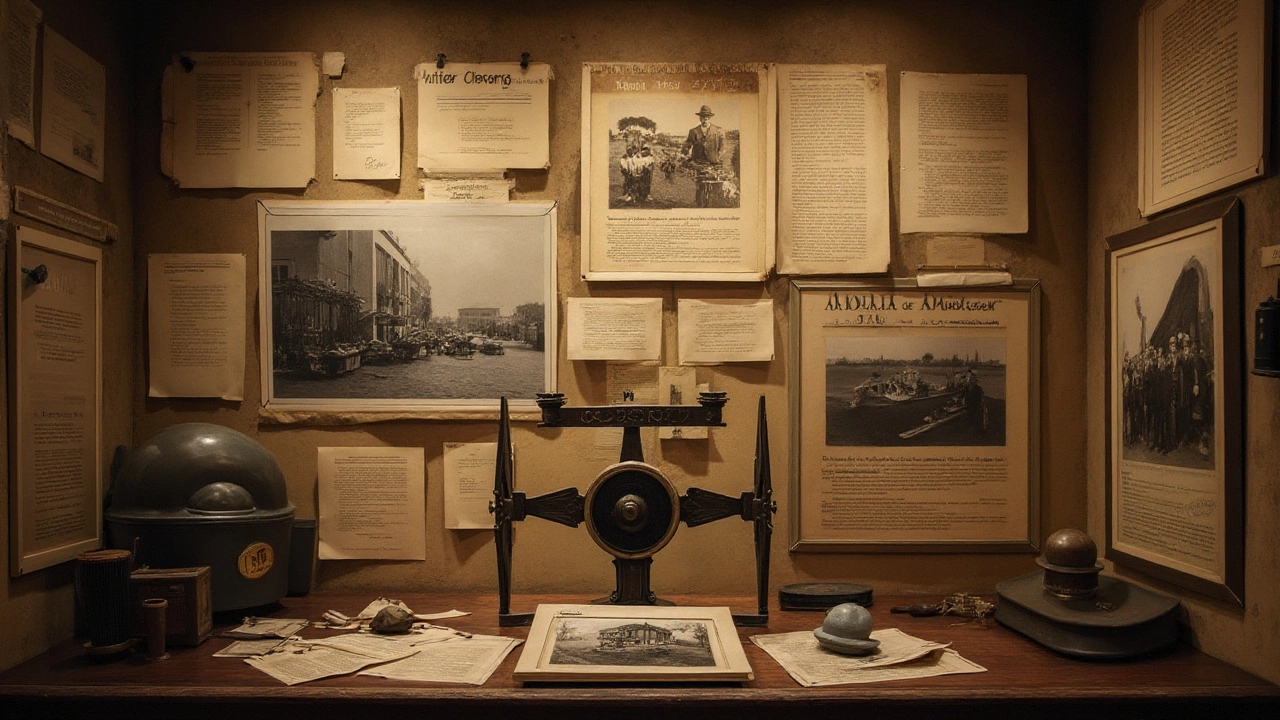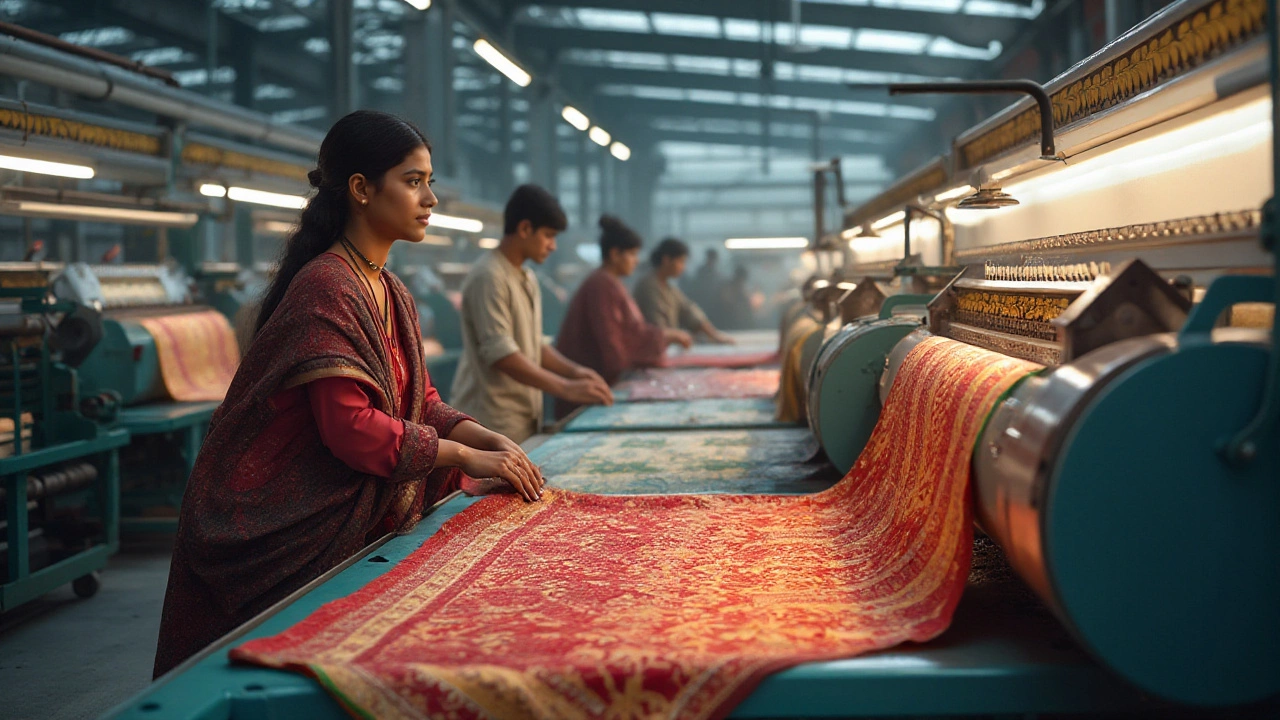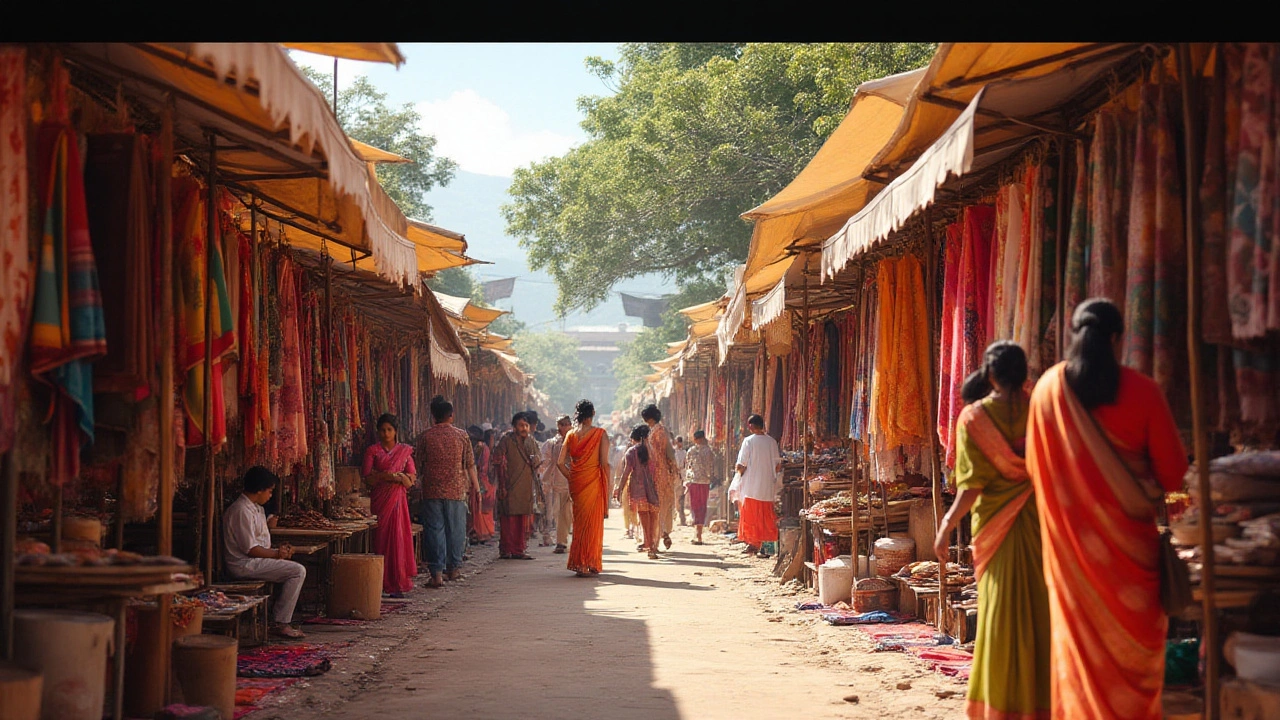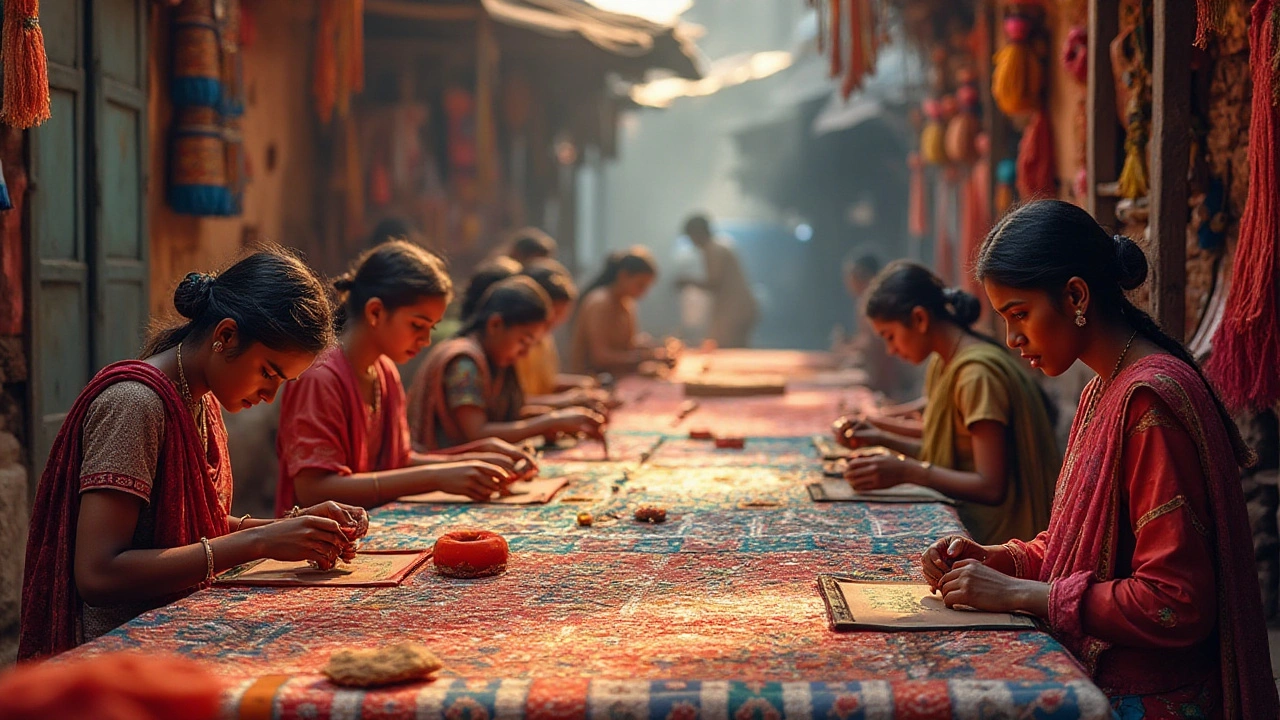India's textile industry is a vibrant tapestry woven with threads of tradition, innovation, and resilience. Among the numerous manufacturers that have dotted the nation's landscape, one stands out as the oldest, with a legacy that transcends centuries. This venerable establishment not only reflects the rich cultural fabric of India but also traces the story of its own evolution through myriad challenges and transformations.
Embarking on a journey back in time, we uncover the origins and continued relevance of India's oldest textile company. From humble beginnings to becoming a global influence, this company has witnessed dramatic shifts in the industry while steadfastly adhering to its core values. In a world constantly moving forward, let's dive into the journey of a true pioneer that continues to shape the Indian textile narrative today.
- Historical Roots and Establishment
- Evolution Amidst Changing Times
- Cultural and Economic Contributions
- Legacy and Modern Relevance
Historical Roots and Establishment
The story of India's oldest textile company is a captivating tale that begins in the mid-19th century, a period marked by socio-economic upheaval and burgeoning industrialization across the world. This period saw textile manufacturing rise to prominence in regions like Gujarat and Tamil Nadu, with pioneering entrepreneurs recognizing the potential within India's vast cotton resources. Established in 1854, Bombay Spinning and Weaving Company, heralded as the first successful textile mill in India, set the stage for the country's enduring relationship with textile art and commerce. Built under the guidance of Cowasji Nanabhai Davar, this milestone marked a shift from agrarian economies to industrial agility.
In those early days, much like the other parts of British India, the local textile manufacturing industry was fairly rudimentary. Traditional artisans dominated the textile landscape, focusing on handcrafted fabrics. Against this backdrop, the establishment of Bombay Spinning and Weaving Company infused new life into the industry, sparking technological innovation and employing mechanized processes that increased production capabilities. This evolution coincided with the introduction of the latest spinning technology, made possible through the confluence of local and European expertise. That period was transformative not just for the company but also for Indian textiles, which began their journey into the global market. The mill drew heavily on India's ancestral textile knowledge while embracing modern industrial techniques, setting a blueprint for future enterprises.
The era also provided a complex canvas where political and economic interests intertwined. With the British colonial presence, access to both infrastructure support and raw materials expanded. However, this led to tensions with local weavers who were wary of the looming competition. Despite these challenges, the company thrived, eventually giving birth to a generation of entrepreneurs who saw textile manufacturing as a viable venture. Among these was the renowned Jamsetji Tata, who founded the Empress Mills in 1877. A visionary unafraid of modernizing, Tata's endeavor was fueled by a deep belief in India's industrial potential.
"A nation that cannot compete with other nations in textile manufacturing cannot expect to support and develop its commerce," he said, summarizing the imperative of adaptation.Such foresight illustrates the deep interconnectivity between entrepreneurship, industrialization, and nation-building during that era.
These initial developments set the foundation for what would become a vibrant and diverse textile landscape. The subsequent years saw increased diversification, with an array of companies emerging, each adding their unique signature to Indian textiles. These pioneering ventures collectively signaled the dawn of India's journey as a textile powerhouse, harnessing both traditional skills and new industrial practices. With textiles deeply interwoven into the cultural, economic, and political tapestry of India, this rich past continues to inspire the modern textile industry. The legacies of these companies have lasting impacts, as their traditions shape present-day practices and their successes inspire future generations of entrepreneurs.

Evolution Amidst Changing Times
The journey of India's oldest textile manufacturer is a captivating tale of endurance and adaptability amidst an ever-evolving landscape. From the onset of the industrial revolution to the present day, this historic enterprise has consistently navigated through vast transformations, ensuring its position as a beacon in the textile industry. Initially, the company operated through time-honored manual methods, harnessing the skills of artisans whose craft had been passed down through generations. As industrialization swept across the world, this company at India's heart found itself at the crossroads of tradition and technological advancement.
In the 19th century, when mechanization posed a potential threat to traditional craftsmanship, the manufacturer embraced the change while preserving its artisanal touch. This careful balance allowed it to scale and meet the rising demands of both domestic and international markets. By incorporating advanced machinery within its production lines, the company did not merely survive the industrial wave—it thrived. This transition marked a watershed moment in ensuring the longevity of its traditional methods alongside more efficient production capabilities, thus shaping the future of Indian textile manufacturing.
A significant milestone was reached in the mid-20th century when the company expanded its horizons to the global market. As export opportunities flourished, it became imperative to adapt to international standards without losing its unique identity. This dual focus on quality and heritage became its trademark. "Our commitment to excellence and respect for tradition have been our guiding principles," noted the company's long-time director in a commemorative address. This philosophy not only boosted the brand but also cemented India's place on the global textile map.
By the late 20th and early 21st centuries, the digital age began influencing all aspects of production and marketing. The oldest textile company, unwavering in its adaptability, harnessed digital technologies to streamline operations and engage with a broader audience. From adopting computer-aided design (CAD) systems to implementing sustainable practices, the company embodies the spirit of continuous evolution. With a nod to eco-friendly production, it pioneered sustainable initiatives that minimized environmental impact while maintaining productivity. Such initiatives resonate with a growing consumer base that values ethical and eco-conscious products, aligning seamlessly with contemporary demands.
Today, this institution stands as a testament to the power of adaptation in the face of changing times. Its journey is not merely about survival but about thriving by reading the pulse of time and transforming challenges into opportunities. Its story inspires other Indian textile manufacturers, offering a roadmap to blend heritage with innovation. As the textile world spins onward, this venerable company proudly carries its legacy into the future, forever interweaving historical authenticity with modern relevance.

Cultural and Economic Contributions
The story of India's oldest textile company is intricately tied to the tapestry of the nation’s history, its economy, and cultural identity. Known for its foundational impact on the Indian textile scene, this company emerged during a pivotal time in history when the country was asserting its presence on the world economic stage. Its establishment marked a period where local crafts were beginning to transition from artisanal practices to large-scale manufacturing, further illustrating its integral influence in bridging the past and the future of textiles in India. Culturally, the company has played an instrumental role in preserving traditional designs while introducing them to contemporary markets – a fusion that appeals to both local and international tastes. Its commitment to quality and authenticity has not only assured its survival but elevated it to become an emblem of the enduring spirit of Indian craftsmanship.
Economic Impact
From an economic standpoint, the company's contributions are manifold. It was pivotal in establishing a thriving textile industry in India, an achievement that generated thousands of jobs and fostered economic development in its surrounding regions. As it expanded operations, it laid the groundwork for a more connected economy by building infrastructure that supported logistics and trade. This growth story is underscored by the network it created for raw materials, thereby influencing agricultural practices and boosting local economies. The textile industry's history in India is incomplete without acknowledging the ripple effect of job creation and skill enhancement initiated by this pioneering company. This transformation did not escape the notice of global markets, placing Indian textiles on the international map.
The legacy of this company extends beyond economic parameters, reaching into the realms of diplomacy and soft power. By exporting traditional Indian textiles globally, it fostered cultural exchange and appreciation, paving the way for a deeper understanding of India's rich tradition and heritage. As markets expanded, the demand for authentic Indian textiles increased, further cementing the company’s contribution to India's global economic footprint. The roadmap it carved for Indian textiles abroad has inspired countless other manufacturers and artisans to follow in its footsteps, creating a vibrant, interconnected global textile community.
Cultural Preservation and Innovation
In its journey to uphold cultural preservation, this textile company has fostered a harmonious relationship between age-old craftsmanship and modern technology. By employing traditional artisans, it maintained the legacy of intricate patterns and indigenous techniques that might have otherwise been lost. These efforts have not only preserved a rich cultural heritage but have also piqued the interest of modern designers who seek inspiration from traditional motifs. The company's workshops and initiatives to train new generations of artisans emphasize the importance of cultural continuity – a unifying factor that keeps diversified traditions alive and thriving.
"Textiles are not just a product; they're a story of culture, innovation, and adaptation. This company's journey underscores the dynamic interplay between tradition and modernity." – Textile Historian, Anjali Rao
This quote captures the company's dual role as a custodian of tradition and a pioneer of innovation. It exemplifies the adaptability and foresight required to sustain relevance amidst an ever-evolving industry landscape. In blending the old with the new, the oldest textile company in India serves as a testament to the power of embracing heritage while welcoming change – a model that continues to inspire the world of textiles and beyond.

Legacy and Modern Relevance
When exploring the history of India's textile scene, the influence of pioneers cannot be overstated. The country's oldest textile company serves as a beacon of craftsmanship and resilience, often mirroring the dynamic tapestry of India itself. Established over a century ago, this enterprise began as a modest mill, spinning fibers into textile, much like other mills of its time. However, through perseverance and adaptation, it transformed itself into a titan, riding the waves of change as it navigated the industry's ebbs and flows. Such tenacity is evident in its ability to weather economic downturns, global pivots, and the relentless march of technology, proving that while the loom of tradition holds steady, the threads of innovation are always being woven in.
One might wonder how a company with roots so firmly entrenched in history manages to remain relevant in today's cutthroat market. The answer lies not only in preserving its legacy but also in its continuous evolution. This stalwart industry player champions sustainable practices, setting a standard in eco-friendly manufacturing long before it became a global talking point. Its dedication to sustainable sourcing and production methods positioned it as a leader in green innovation, which echoes across the textile world. Through cutting-edge technology and continuous dialogue with eco-conscious consumers, it eloquently merges the ancient art of textile making with today's demand for ethical products.
The relevance of this ancient company today is further bolstered by its vibrant cultural contributions. It plays an active role in promoting indigenous art forms, collaborating with local artisans to integrate age-old techniques with modern styles. Such endeavors not only help keep traditional crafts alive but also create opportunities for local communities, sustaining livelihoods and fostering creativity. As one respected textile historian remarks,
"The fusion of tradition and innovation in India's oldest textile company serves as a remarkable testament to the enduring spirit of the country's artisanal heritage."By embracing a harmonious blend of heritage and modernity, this textile powerhouse continues to inspire and engage with an ever-expanding audience.
Moreover, as exports from the Indian textile industry soar, this venerable company's role as a global ambassador for India's textile heritage cannot be understated. It has woven itself into the international imagination, garnering accolades for quality and authenticity. This has come about due to strategic partnerships and collaborations with global fashion houses, further solidifying its place on the world stage. In recent years, the demand for ethically-produced and premium quality textiles has skyrocketed, and the company has been at the forefront of this movement; its product lines frequently receive high rankings in global reports regarding textile innovation success.
In conclusion, the legacy of India's oldest textile company serves as a lesson in resilience, adaptation, and the seamless blending of past and present. Its story is not just about threads and fabric, but about an enduring spirit that continues to innovate and inspire. It's a testament to how tradition and modernity can coexist beautifully, creating an enterprise that respects its past while crafting its future. With its remarkable journey, this company not only enriches the textile industry but also serves as a narrative of hope and inspiration for future generations of Indian entrepreneurship.
